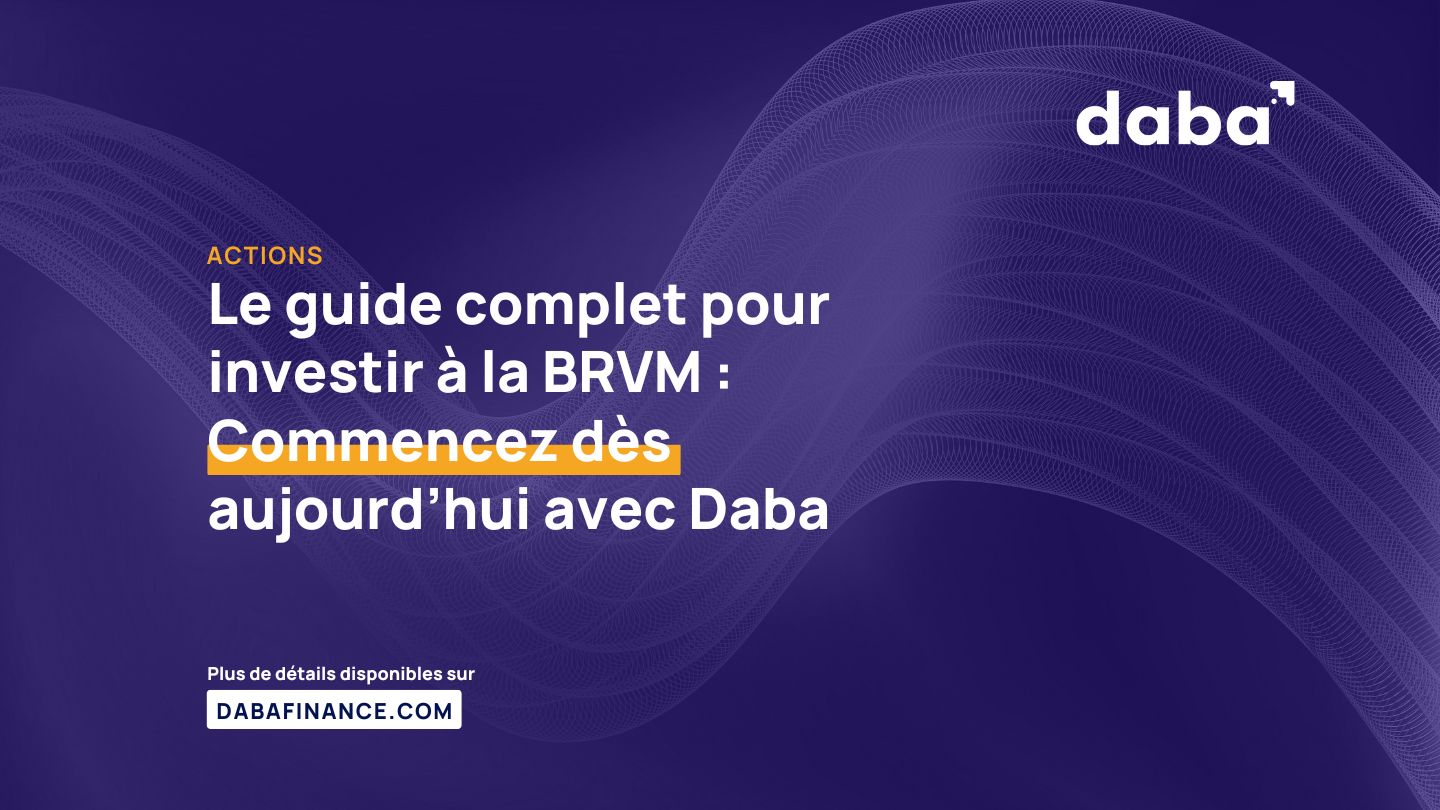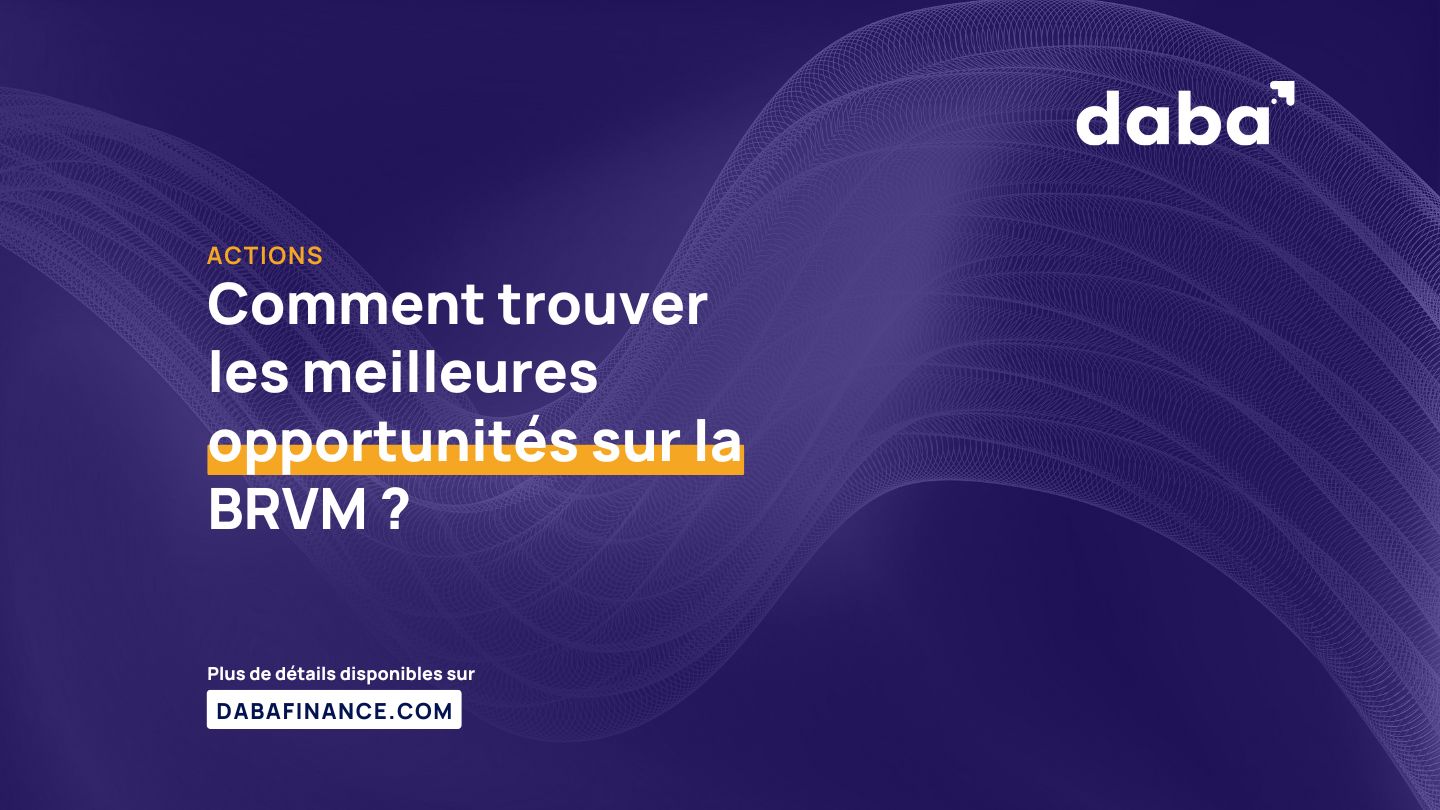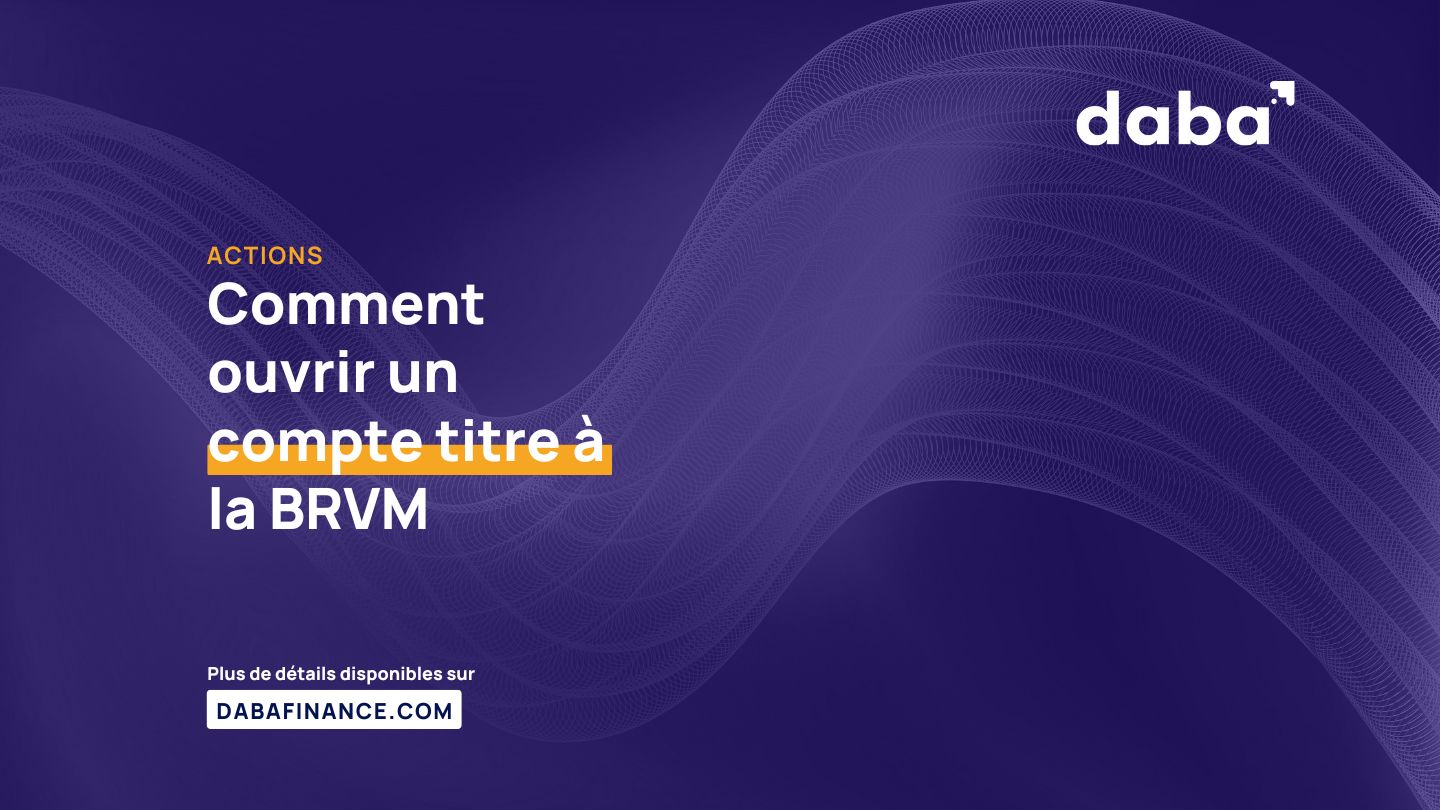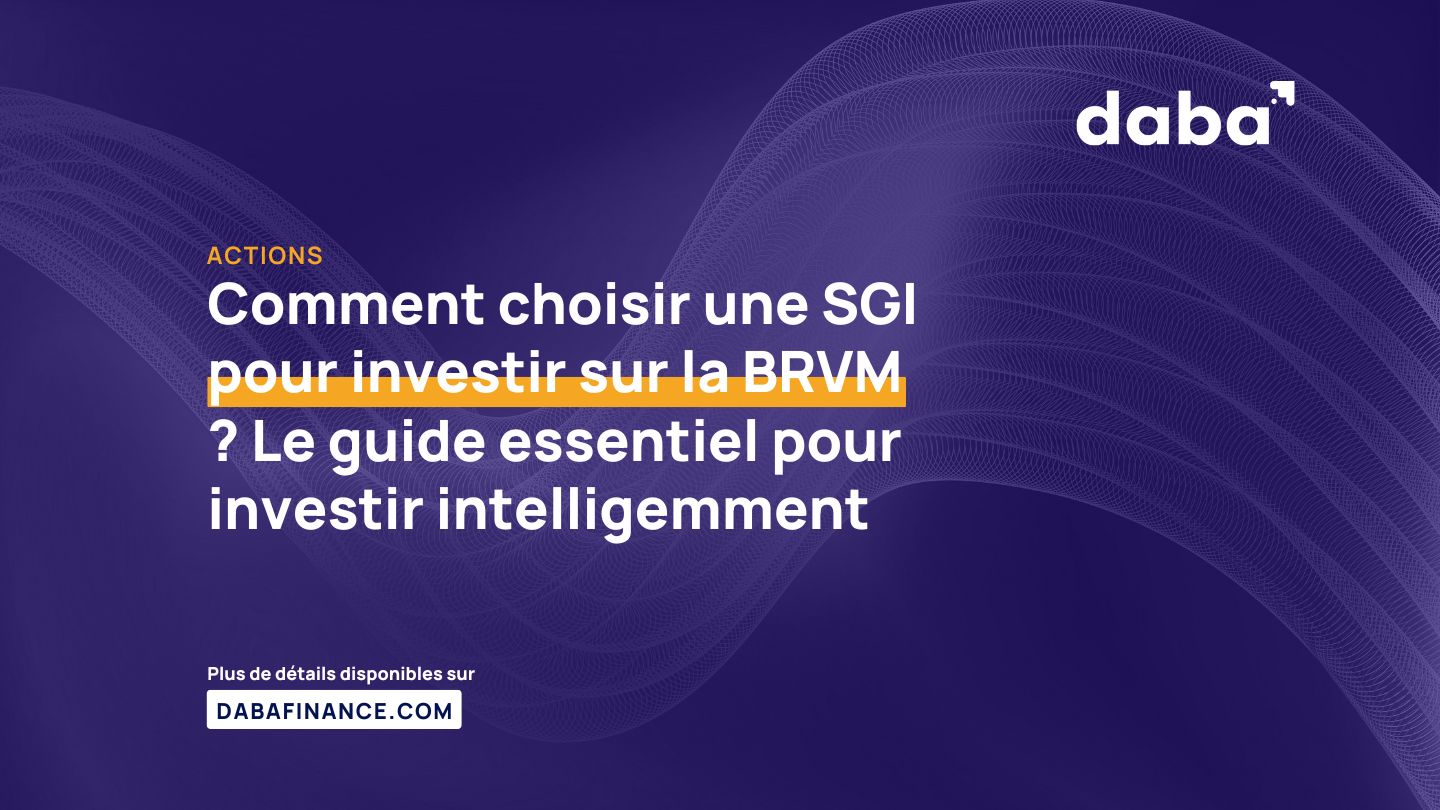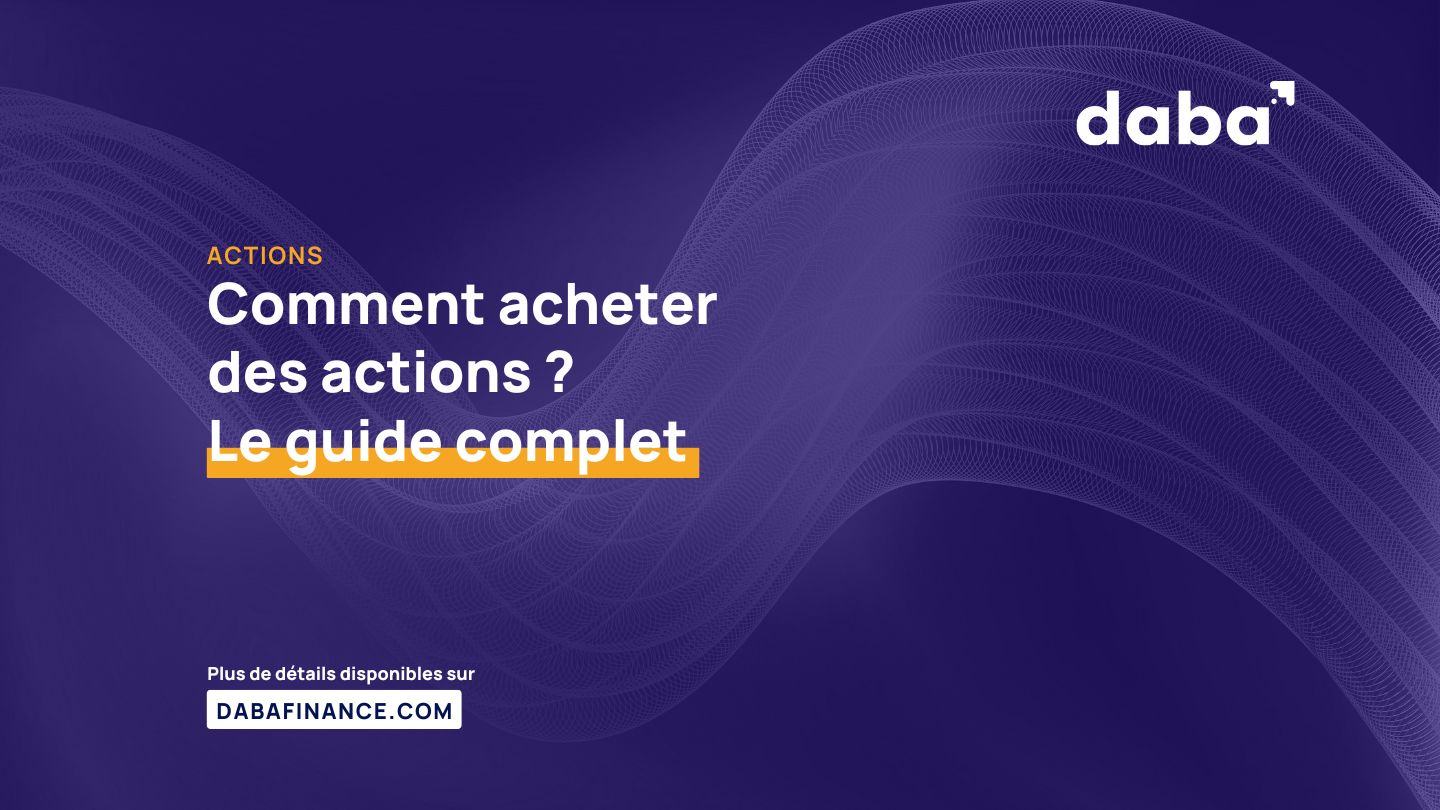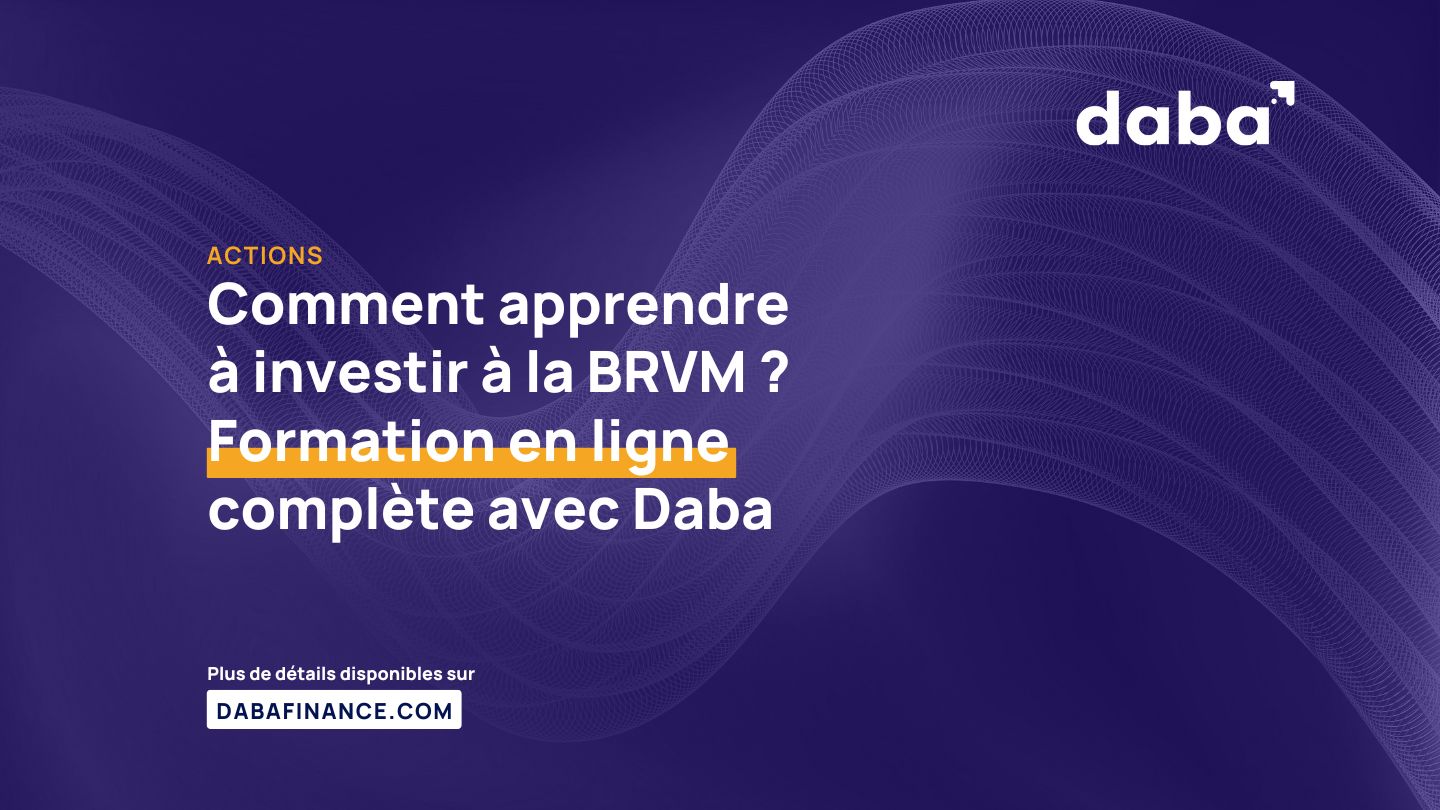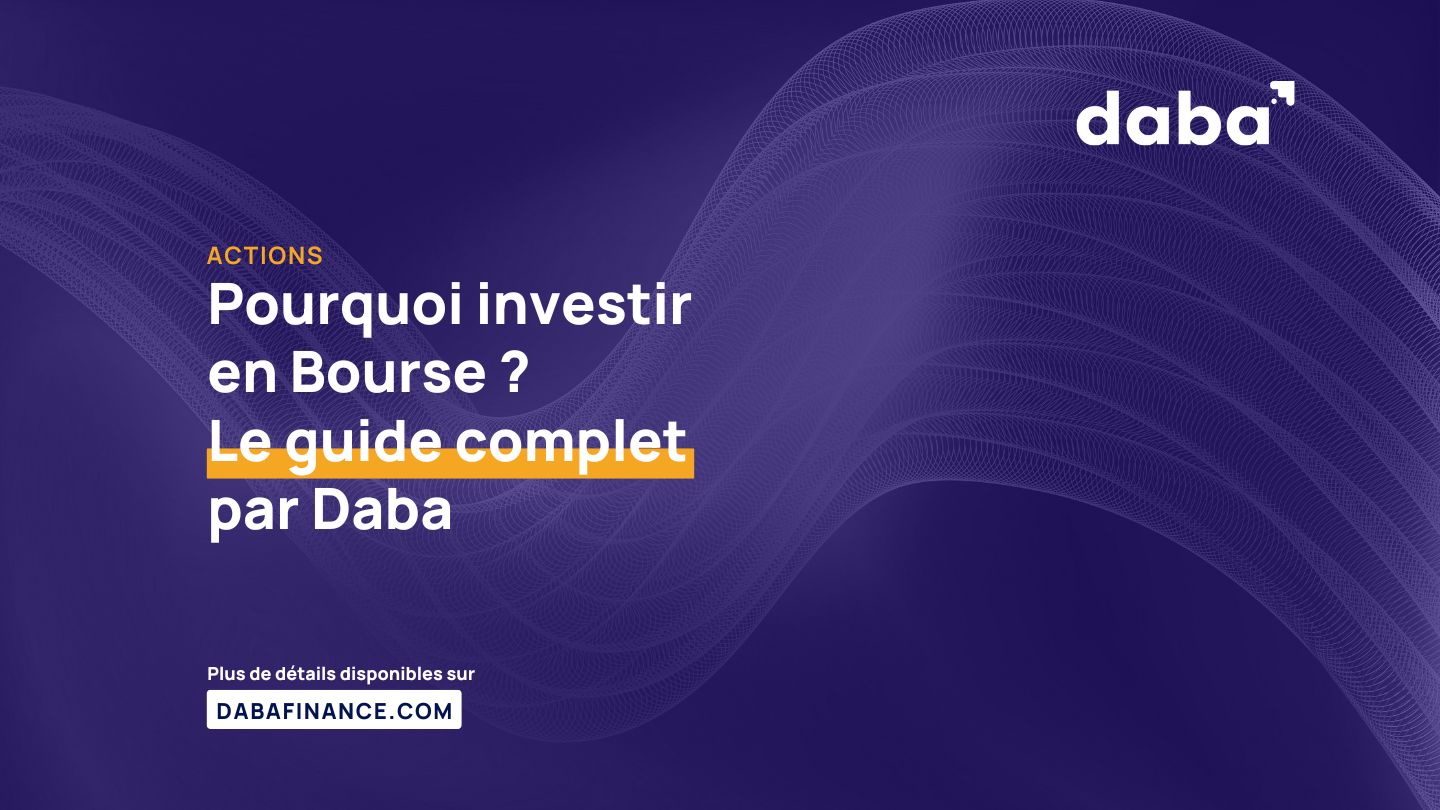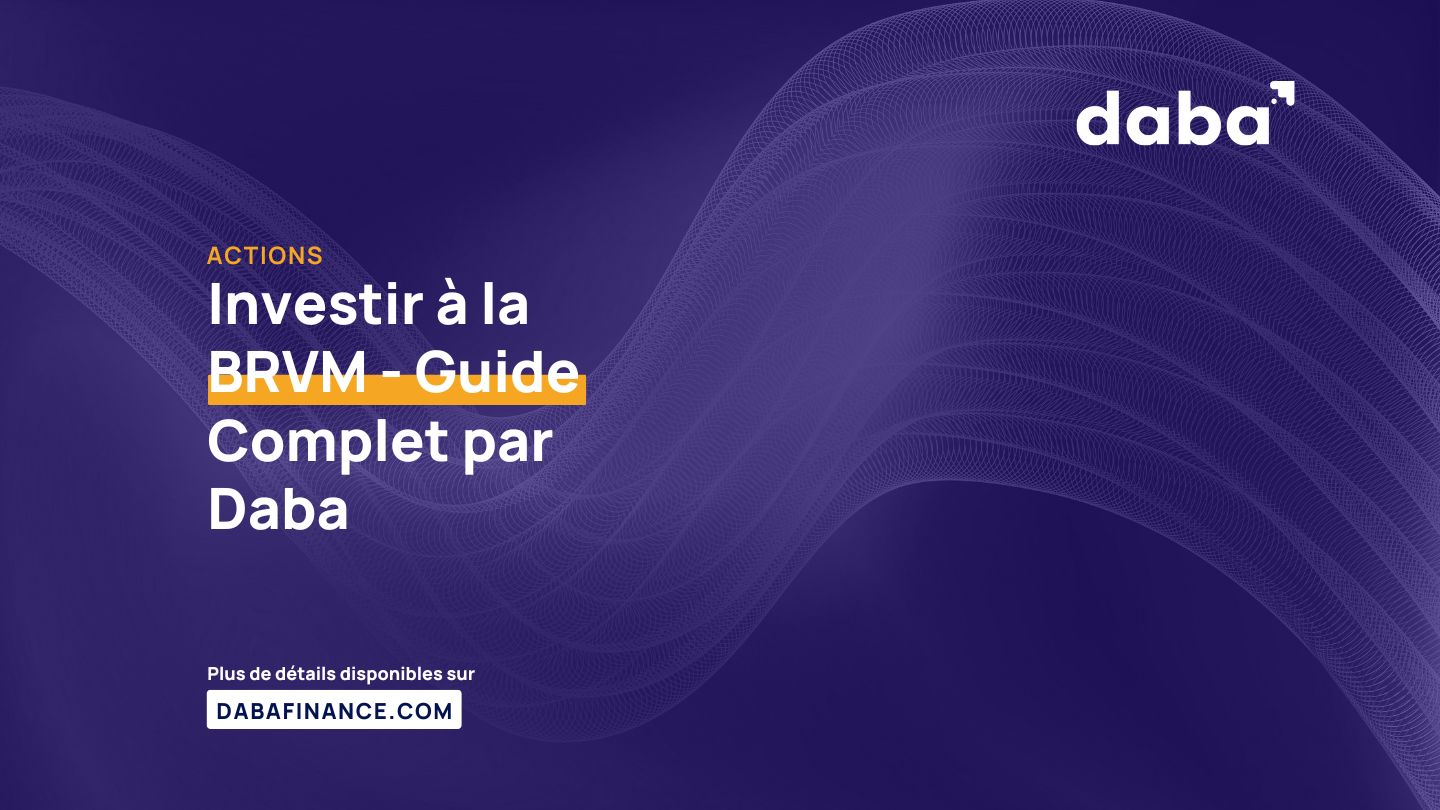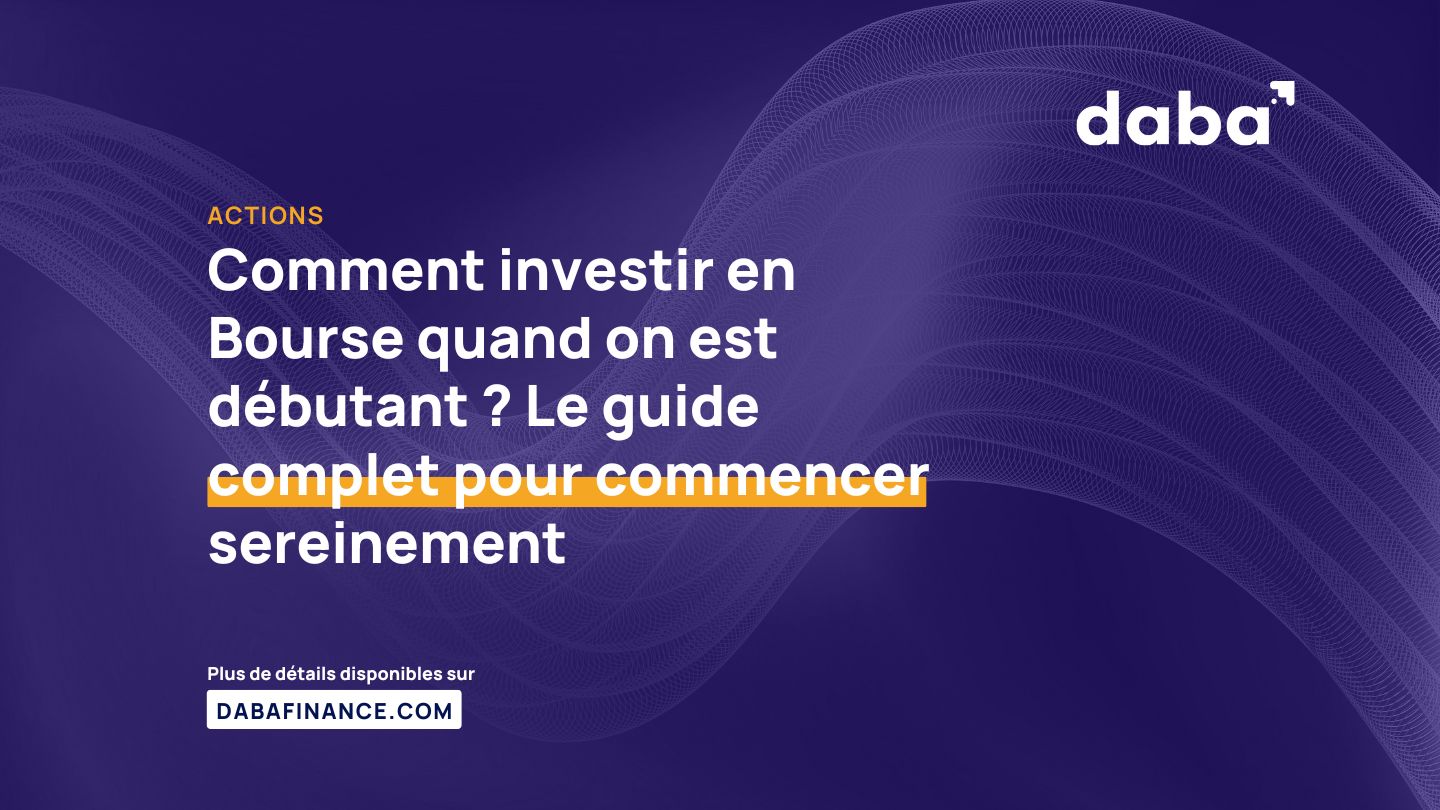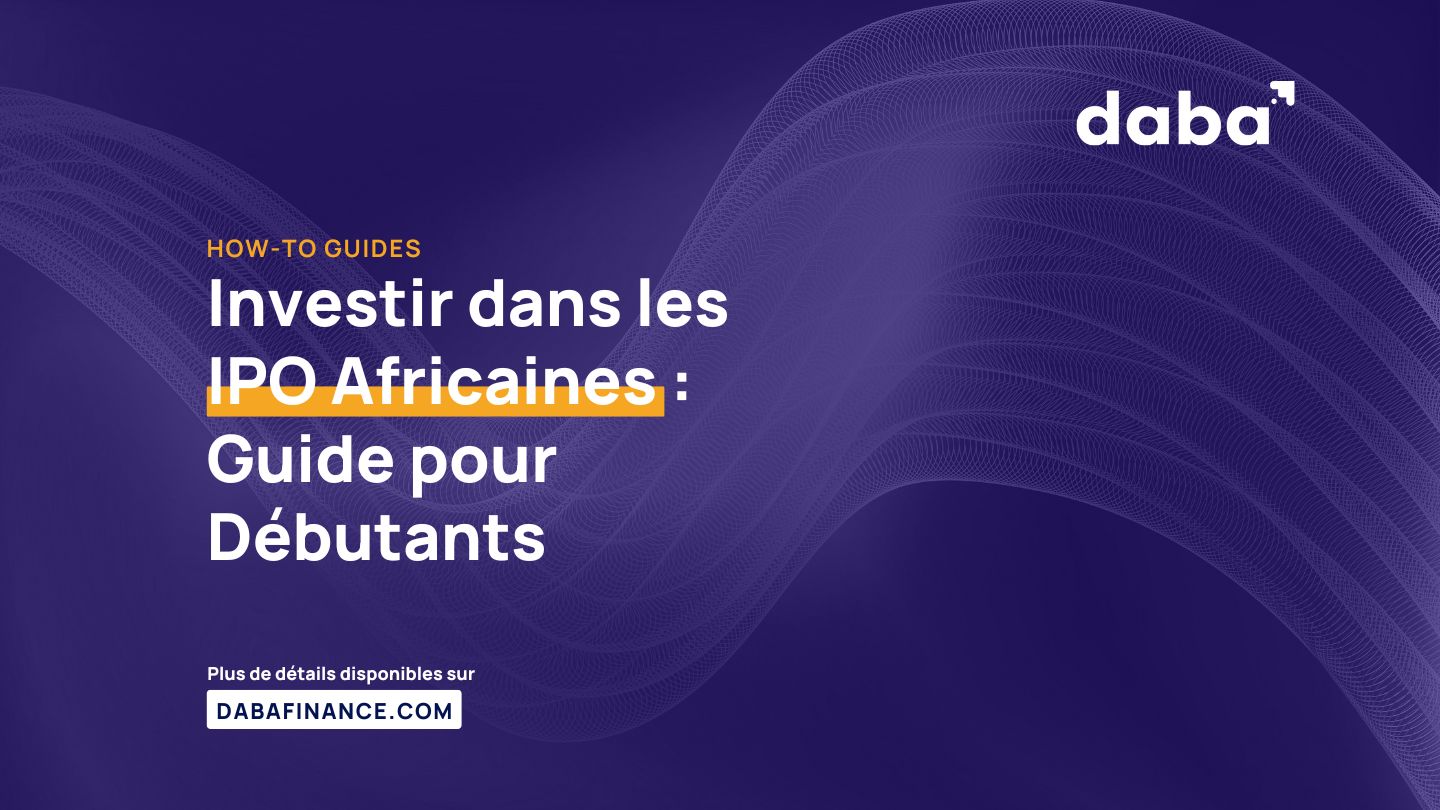Dans un monde où l’information circule à grande vitesse et où les opportunités financières sont souvent réservées à une minorité, la BRVM (Bourse Régionale des Valeurs Mobilières) apparaît comme une alternative stratégique pour investir en Afrique de manière simple, accessible et rentable.
Mais comment investir intelligemment à la BRVM ? Quelle stratégie adopter ? Et surtout, par où commencer ? Ce guide complet vous donne toutes les clés pour débuter sereinement et faire fructifier votre argent sur les marchés d’Afrique de l’Ouest, avec l’aide de la plateforme Daba.
Qu’est-ce que la BRVM ?
La BRVM est une bourse commune aux 8 pays de l’Union Économique et Monétaire Ouest-Africaine (UEMOA), dont le siège est situé à Abidjan, Côte d’Ivoire. Elle regroupe plus de 40 entreprises cotées, réparties dans divers secteurs : banque, télécom, agro-industrie, distribution, etc.
Avec une monnaie stable (le franc CFA, arrimé à l’euro), une fiscalité avantageuse, et une économie régionale en croissance, la BRVM est un marché idéal pour les investisseurs débutants et expérimentés.
Pourquoi investir à la BRVM ?
Investir à la BRVM, c’est accéder à des entreprises africaines solides, souvent sous-valorisées, avec des rendements attractifs (dividendes de 5 à 10 % pour certaines sociétés), et une volatilité généralement plus modérée que sur d’autres marchés émergents.
C’est aussi contribuer au développement du continent africain tout en construisant un patrimoine financier résilient et diversifié.
Grâce à l’appli Daba Finance, vous pouvez investir dès 10 000 FCFA, suivre votre portefeuille en temps réel et recevoir des conseils adaptés à votre profil.
Comment débuter en bourse avec la BRVM ?
Contrairement aux idées reçues, il n’est pas nécessaire d’avoir un capital énorme pour commencer à investir à la BRVM. L’investissement est progressif et peut se faire dès que vous êtes prêt, même avec un petit budget.
Mais avant de placer votre argent, il faut comprendre les bases :
- Qu’est-ce qu’une action ?
- Quelle est la différence entre une action et une obligation ?
- Comment choisir une entreprise cotée ?
- Quelle est votre tolérance au risque ?
Pour répondre à toutes ces questions, Daba a lancé l’Académie du Patrimoine — une formation en ligne complète, pratique et accessible à tous, même sans aucune connaissance financière préalable.
Apprenez à investir sur la BRVM grâce à l’Académie du Patrimoine
L’Académie du Patrimoine par Daba, c’est 24 modules pédagogiques couvrant tout ce que vous devez savoir pour investir efficacement en Afrique :
- Les fondamentaux de la bourse
- La structure de la BRVM
- L’analyse d’entreprises cotées
- La stratégie de diversification
- Le suivi de portefeuille
- Et même un livre pratique pour accompagner vos premiers pas
👉 Découvrir le cours Investir à la BRVM
👉 Acheter le guide papier ici (remboursable sur votre premier investissement sur Daba)
En plus, 5 000 FCFA sont offerts à tout nouvel apprenant pour investir dès la fin de la formation.
Étapes pratiques pour investir avec Daba
- Téléchargez l’application Daba Finance
Depuis votre smartphone, accédez à des dizaines d’actions, obligations et fonds cotés sur la BRVM, ainsi que d’autres marchés africains. - Ouvrez un compte gratuit
Il vous suffit de quelques minutes pour créer votre compte d’investissement et commencer à transférer vos fonds. - Choisissez vos actions
Grâce aux collections thématiques de Daba (secteur bancaire, télécoms, agriculture, etc.), vous pouvez investir en toute confiance, selon vos intérêts et valeurs. - Suivez vos investissements
L’application vous permet de consulter vos performances, vos dividendes, et vos recommandations personnalisées.
Investir en Afrique, c’est investir dans l’avenir
Tandis que l’attention mondiale reste focalisée sur Wall Street ou la Bourse de Paris, l’Afrique avance, doucement mais sûrement. Avec une classe moyenne en expansion, une population jeune et connectée, et une digitalisation accélérée, les entreprises africaines sont en pleine transformation.
Des entreprises comme Orange Côte d’Ivoire, Ecobank, BOA, SAPH ou Total CI offrent déjà de solides performances à la BRVM. Et ces opportunités sont désormais à portée de main, via Daba.
Et si vous ne savez pas par où commencer ?
Pas de panique. Daba propose également des portefeuilles gérés. Vous choisissez votre profil de risque, et notre équipe se charge d’allouer votre capital de façon intelligente et diversifiée. Un bon point de départ si vous préférez déléguer tout en apprenant.
Conclusion : La BRVM n’attend que vous
Ce n’est pas une question de timing parfait, ni de montant spectaculaire. C’est une question de décision. Investir à la BRVM aujourd’hui, c’est :
✅ Prendre en main votre avenir financier
✅ Soutenir les économies africaines
✅ Profiter d’un marché en pleine expansion
✅ Le faire de manière simple, accompagnée, via l’écosystème Daba
🎓 Formez-vous dès maintenant sur l’Académie du Patrimoine
📲 Investissez dès 10 000 FCFA avec l’app Daba Finance
📘 Téléchargez notre guide pratique pour investir à la BRVM
Le futur appartient à ceux qui se forment et passent à l’action. Pourquoi pas vous ?
